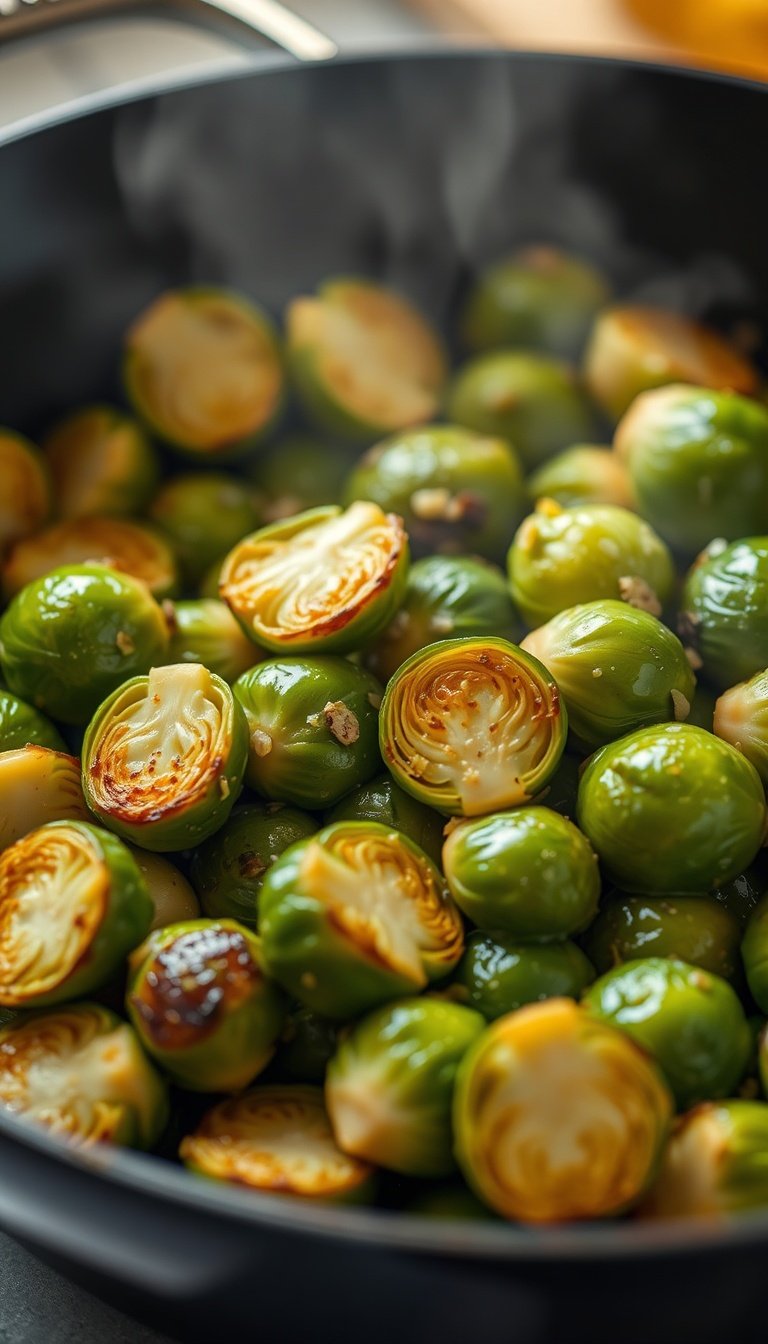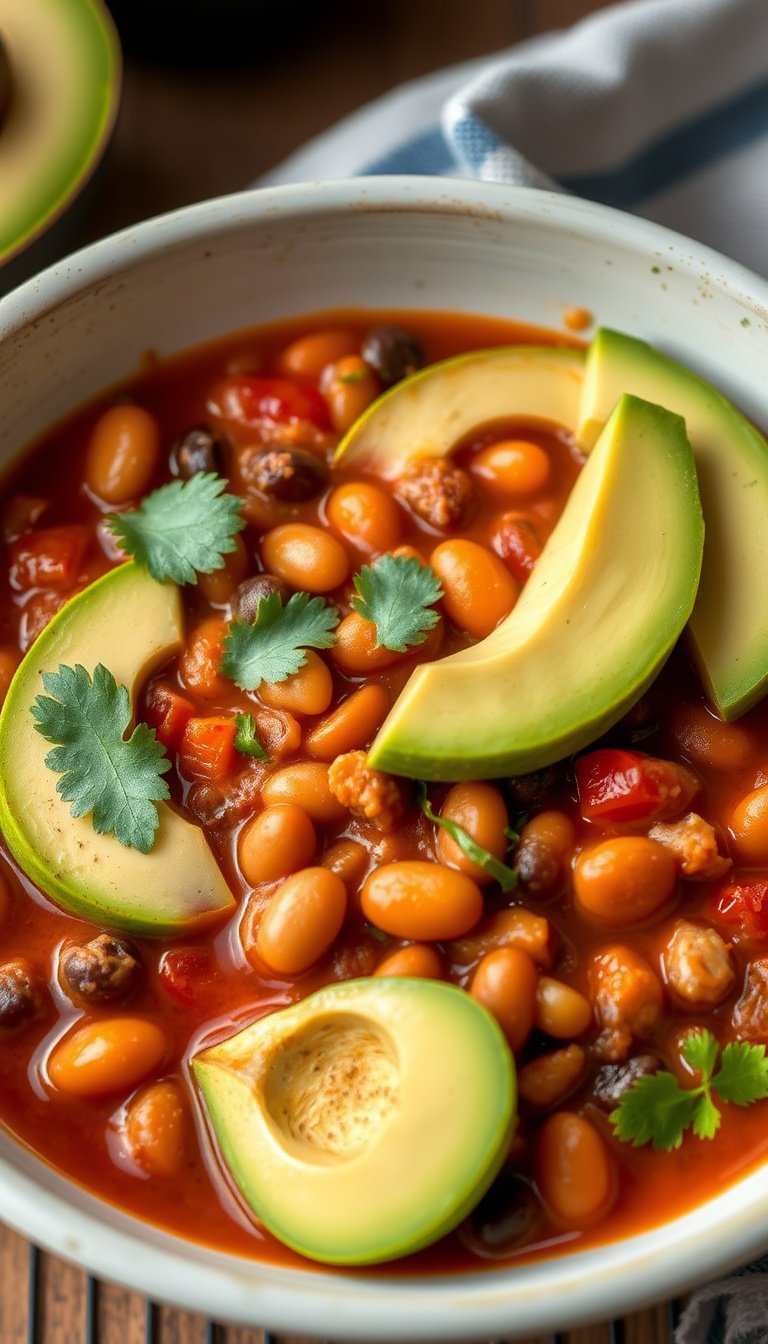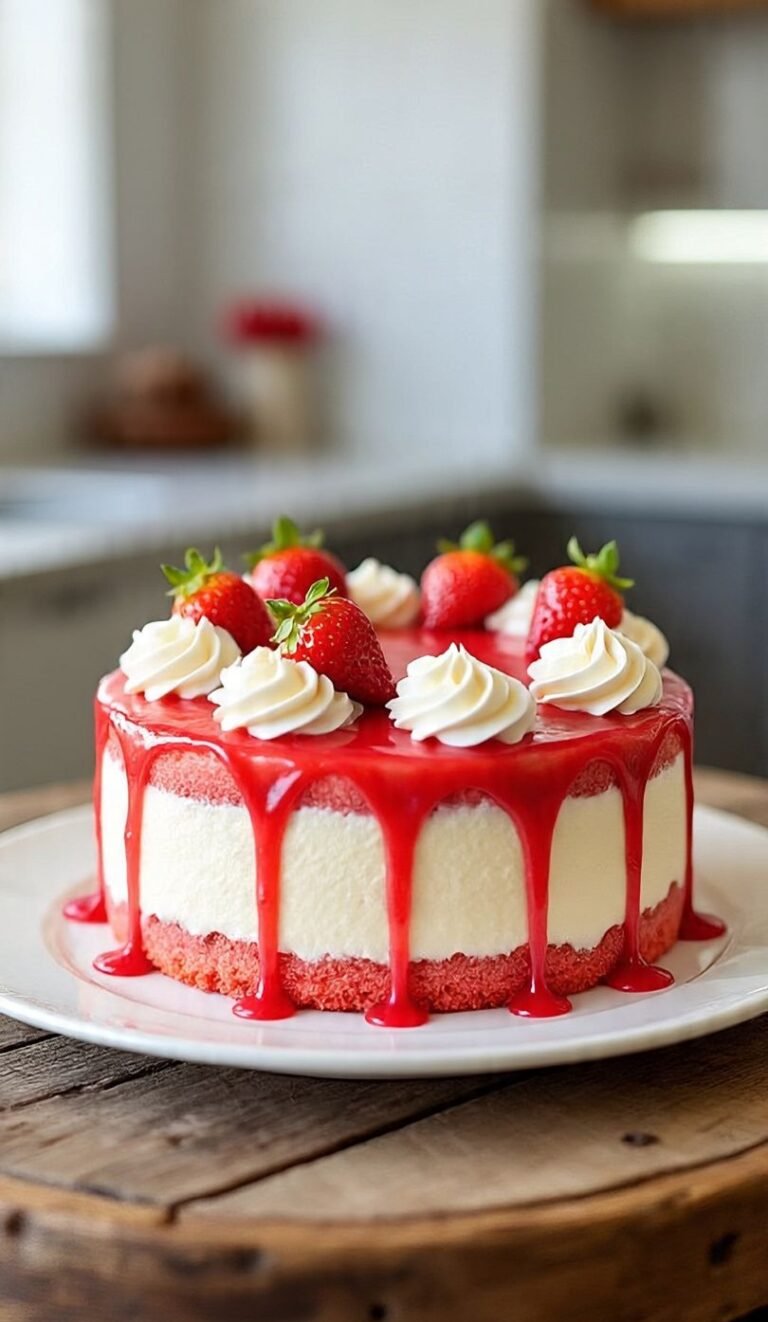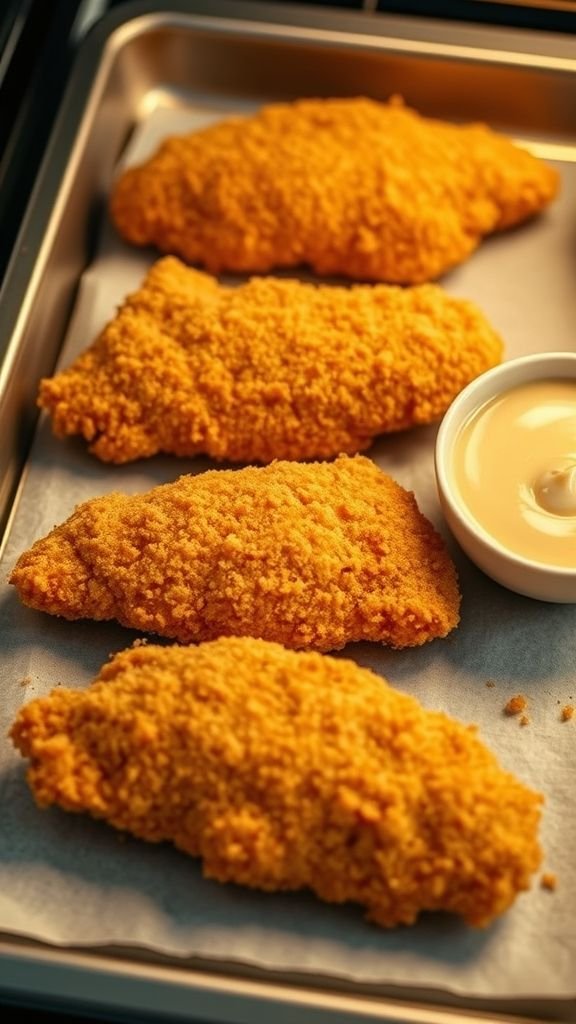Whether you’re wrapping a brisket for a low-and-slow barbecue or lining a tray for cookies fresh out of the oven, the choice between butcher paper vs parchment paper can make or break your dish. While they may look similar at first glance, these kitchen papers serve very different purposes.
In this guide, we’ll break down the key differences, explain when to use each one, and help you make the best choice depending on what you’re cooking. From barbecue lovers to home bakers, understanding these tools is essential.
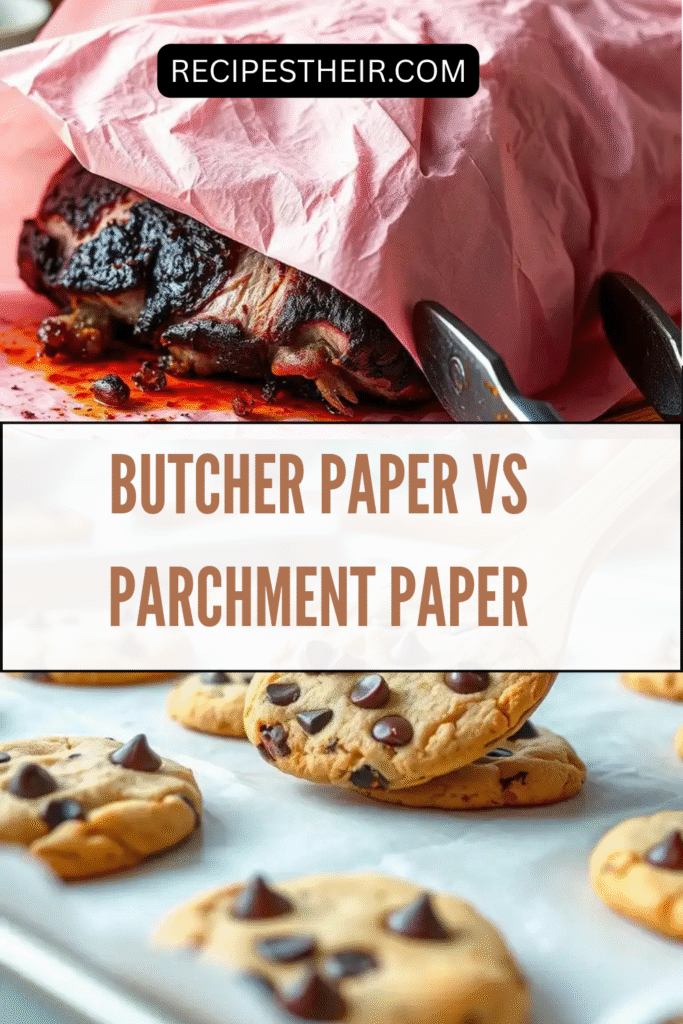
What is Butcher Paper?
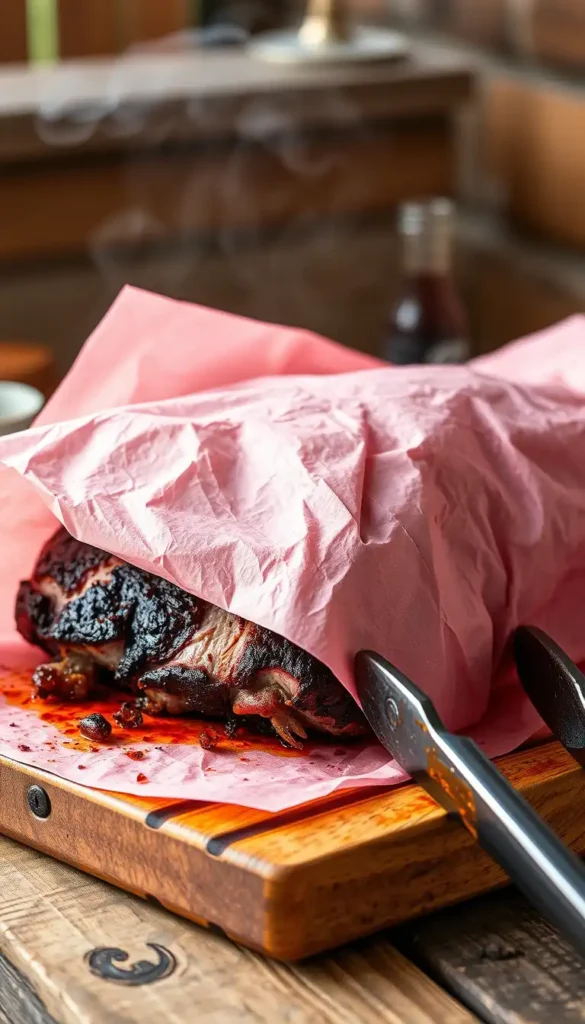
Butcher paper is a heavy-duty, uncoated paper traditionally used by butchers to wrap meat. It’s made from wood pulp and designed to be strong, breathable, and moisture-resistant.
Types of Butcher Paper:
- White Butcher Paper – Popular in delis for wrapping sandwiches.
- Pink Butcher Paper (also known as Peach Paper) – Favored by BBQ pitmasters for wrapping briskets and ribs.
- Brown/Unbleached Butcher Paper – All-natural, chemical-free option.
Key Features:
- Breathable (allows smoke to penetrate meat).
- Moisture-resistant but not waterproof.
- Doesn’t trap steam like foil.
What is Parchment Paper?
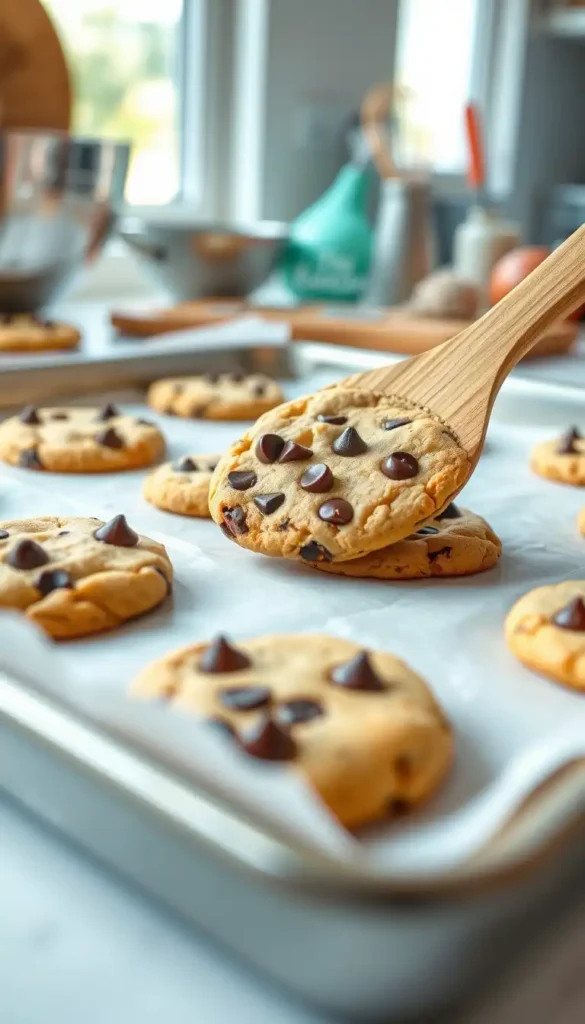
Parchment paper is a non-stick, heat-resistant paper coated with silicone or similar material, making it perfect for baking. It’s typically white or brown and comes in rolls or pre-cut sheets.
Key Features:
- Non-stick surface – ideal for baked goods.
- Can handle oven temperatures up to 420°F–450°F.
- Available in bleached (white) and unbleached (brown) versions.
Butcher Paper vs Parchment Paper: Key Differences
Let’s dive deeper into the core differences:
| Feature | Butcher Paper | Parchment Paper |
|---|---|---|
| Material | Uncoated or lightly coated paper | Silicone-coated paper |
| Heat Resistance | Up to 450°F (depends on quality) | Up to 420°F–450°F |
| Breathability | Breathable, allows smoke & moisture | Non-breathable |
| Moisture Control | Wicks moisture without steaming | Traps steam and moisture |
| Non-Stick | No | Yes |
| Best Use | Smoking meat, wrapping raw cuts | Baking cookies, roasting veggies |
When to Use Butcher Paper
1. Smoking Meat (Especially Brisket)
If you’re serious about barbecue, pink butcher paper is your secret weapon. It allows smoke to flavor the meat while keeping it moist. Unlike foil, it won’t trap steam, which can ruin bark formation.
Pro Tip: Wrap your brisket in pink butcher paper once it hits the stall (around 165°F internal temperature). This helps push it through the stall without losing that perfect crust.
2. Wrapping Meat for Storage
Butcher paper is excellent for wrapping raw or cooked meat for short-term storage. It allows meat to breathe, preventing a slimy texture from forming.
3. Serving BBQ
Many barbecue joints use butcher paper instead of plates. It’s a great rustic, no-mess option for serving ribs, pulled pork, or sausage.
When to Use Parchment Paper
1. Baking Cookies, Cakes & Pastries
The non-stick surface makes parchment paper a baker’s dream. No more scraping cookies off trays! It also helps cakes release cleanly from pans.
2. Roasting Vegetables
Want perfectly roasted carrots or crispy Brussels sprouts? Line your tray with parchment paper for even cooking and easy cleanup.
3. Steaming Fish or Chicken in the Oven (En Papillote)
Parchment is perfect for creating a sealed pouch that steams fish or chicken with herbs, lemon, and veggies. Butcher paper can’t handle moisture and steam the same way.
Can You Use Butcher Paper Instead of Parchment Paper?
Short answer: Not usually.
- For smoking meat, butcher paper is best.
- For baking, parchment paper wins every time.
If you’re tempted to substitute one for the other, consider this:
- Butcher paper is not non-stick. Cookies will likely stick to it.
- Parchment paper doesn’t breathe, so it’s not ideal for smoking meats—it traps too much moisture and can ruin the bark.
Can Butcher Paper Go in the Oven?
Yes—but only for specific purposes like wrapping meat at moderate temperatures (below 450°F). It’s not made for baking cookies or direct contact with oven racks at high heat. Always check packaging for max temperature ratings.
Can Parchment Paper Go on the Grill?
Not recommended. Parchment paper can catch fire at high grill temps (especially over 450°F). For grilling or smoking, stick with butcher paper or foil.
Best Alternatives
If you don’t have parchment or butcher paper on hand, here are a few options:
Alternatives to Parchment Paper:
- Silicone baking mats – Reusable and oven-safe.
- Greased aluminum foil – Not as reliable, but it works in a pinch.
Alternatives to Butcher Paper:
- Aluminum foil – Great for wrapping meat, though it traps more moisture.
- Uncoated kraft paper – Similar in function but not always food-safe.
Summary: Butcher Paper vs Parchment Paper
If you’re standing in the kitchen trying to decide which paper to grab, here’s your cheat sheet:
- Use butcher paper when smoking meats, wrapping raw cuts, or storing meat.
- Use parchment paper when baking cookies, lining cake pans, or roasting veggies.
They both have a place in your kitchen, but they’re not interchangeable. Understanding the difference helps you cook better—and with fewer mistakes.
Final Thoughts
The battle of butcher paper vs parchment paper isn’t about which one is better—it’s about using the right tool for the job. If you’re baking brownies, parchment is your best friend. If you’re aiming for a juicy smoked brisket with a crispy bark, butcher paper is the champ.
So next time you’re prepping for a cookout or sliding cookies into the oven, take a moment to grab the paper that matches the task. Your food will thank you.

